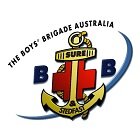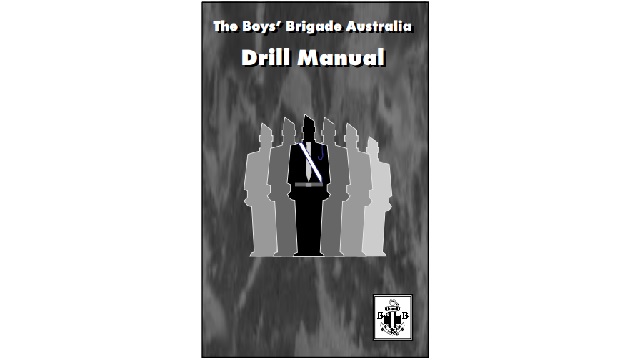It is important that the Colour Drill is carried out with the correct drill movements.
Basic Positions
- The Order. The pike and the lowest corner of the Colour is held with the right hand at the full extent of the right arm. The pike is perpendicular, the bottom of the pike resting on the ground in line with and against the right toe cap.
- Stand at Ease, and Stand Easy. The normal movements are carried out, but the left hand remains at the side, the Colour kept vertically at the right side.
- The Slope. The pike is placed on the right shoulder and held with the right hand, the elbow close into the side, and the right forearm parallel with the ground. The Colour hangs over and covers the right shoulder and arm.
On a long march, the pike may be changed to the left shoulder. - The Carry. The pike is carried vertically in the socket of the carrier. The corner of the Colour is held in the right hand, which also grasps the pike opposite the mouth, with the back of the hand to the front, wrist and forearm horizontal.
The various positions are used as follows:



Movements of the Colour Party
(i) One Colour—The Colour Party may turn about or temporarily turn into single file, e.g. when moving in a narrow aisle in Church. Wherever possible, however, the Colour Party should always remain in line, and changes of direction should therefore be carried out by means of forms, as follows:
COLOUR PARTY, CHANGE DIRECTION RIGHT, RIGHT—FORM FOR—WARD, BY THE RIGHT
The Colour Party acts as in Basic Drill, except that the pivot person does not step forward, but turns and marks time until the command FOR—WARD is given. If necessary, he steps to the side to conform to the new alignment of the Company.
(ii) Two Colours—The Colour Party should always remain in line, and changes of direction are carried out as indicated above, the N.C.O.’s or Seniors in the rear maintaining their correct position behind the Colour bearers.
NB When carrying out movements in confined spaces, e.g. in Church, variations may be made dependent upon local circumstances, but the aim should be for members of the Colour Party to move in a smart manner to their new positions.
(d) Colours on Church Parade
The general arrangements for Church Parade are given on page 9.2, section 2.
On arrival at the Church, the Company will be halted in line or column and the Colours marched off. The Colour Party, taking orders from the Senior Officer, will proceed to the vestry or some other pre-arranged place. There the members of the Colour Party will remove head-dress. (This procedure should be followed whether the service is held in a Church or some other building.)
It is emphasised that in all arrangements regarding the handling of Colours within the Church, and the positions which the Colour Party will take in the execution of their duties, there should be complete co-operation with the Minister and Church Authorities, thus ensuring that all actions conform to the custom and practice of the Church to which the Company belongs.
It is usual for the Colours to be brought into the Church immediately after the entry of the Minister and before the service proceeds. The congregation standing, they are carried in slow time at the Carry to the front. It is appropriate for the Minister to receive them from the bearers, taking the Company Colour first, and to place them in some prominent position where they remain during the service. The Colour Party should then move to seats reserved for them.
At Church Parades the Colour bearers should not kneel when handing over the Colours, or when receiving them at the close of the service. Bearers kneel only at the presentation of new Colours.
Where the Church has a centre aisle, this should be used for entry, the Colour Party retaining proper formation as described on page 9.4, section 3 (b).
Where the Church has two aisles, some difficulty may be experienced in the movements of a Colour Party consisting of two Colour bearers and three N.C.O.s/Seniors. In such cases the Colour Party should use both aisles and move in single file, the Queen’s Colour, followed by two Noncommissioned Officers, down the aisle on the right, and the Company Colour, followed by one Non-commissioned Officer, down the aisle on the left.
Care should be taken to ensure that when the Colours are situated in the place which they will occupy during the service the Queen’s Colour will maintain its position of the right of the Company Colour, i.e. on the left from the viewpoint of the congregation facing the Colours.
At the end of the service, usually during or after the singing of the last hymn, the Colour Party will move to the front and receive the Colours at the Carry. The Queen’s Colour will be handed over first. The Party will remain in that position during the National Anthem and then Colours will be brought to the Order for the Benediction. The congregation should be standing while the Colours are received and will remain standing while the Colour Party move out in slow time.
The Colour Party will replace head-dress and remain in their appointed place until the Company is re-formed outside the Church and ready to receive the Colours.

